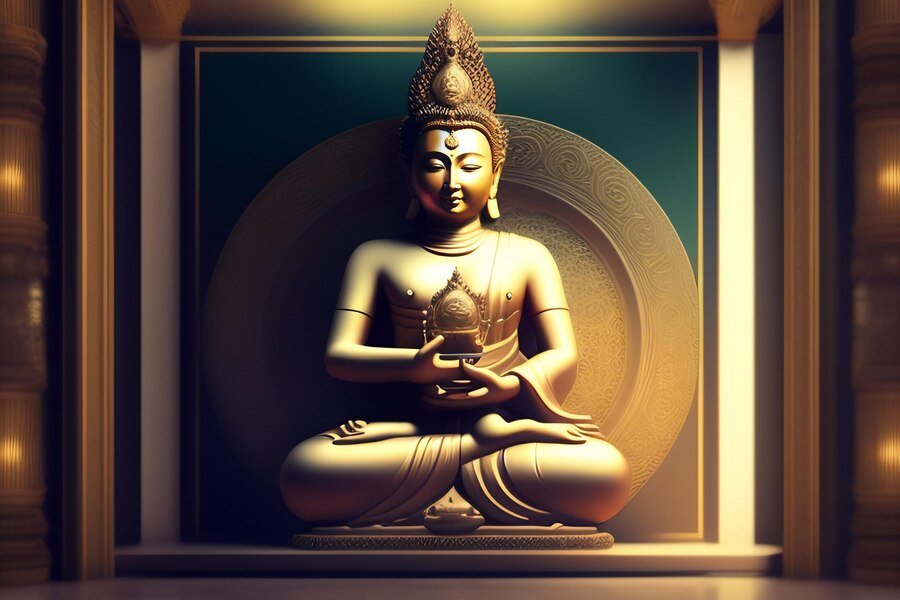imagesize:地藏王菩薩 1920×1080
Ksitigarbha Bodhisattva, or “Earth Store Bodhisattva,” occupies a cherished position in Buddhist teachings and culture. Known for his boundless compassion and vow to save all sentient beings, Ksitigarbha is a figure of hope, healing, and empowerment. Whether you’re a devout practitioner or someone exploring Buddhist principles, learning about Ksitigarbha’s significance can deepen your understanding of compassion and morality in the Buddhist tradition.
This post dives into the rich history, symbolism, and teachings of Ksitigarbha, along with practical ways to incorporate his wisdom into daily life.
The Legend and Symbolism of Ksitigarbha
Ksitigarbha is widely regarded for his unwavering promise to save beings caught in the suffering of samsara (the cycle of birth, death, and rebirth). A key part of his legend originates from the Earth Store Sutra—a foundational Buddhist scripture that recounts his immense vow to remain in the realms of suffering until all beings are liberated.
Symbolism of Ksitigarbha
- Staff of Compassion: Often depicted holding a six-ringed staff, Ksitigarbha uses this to open the gates of hell and lead suffering souls to liberation. The staff symbolizes guidance and support for those in need.
- Wish-Fulfilling Jewel: The jewel in his hand represents the light of wisdom, guiding beings out of the darkness of ignorance.
- Earth Store Gesture: His name “Ksitigarbha” translates to “Earth Treasure,” signifying stability, nurture, and boundless patience akin to the earth’s qualities.
Role in the Buddhist Pantheon
Ksitigarbha is revered as one of the Four Great Bodhisattvas in Mahayana Buddhism, alongside Avalokiteshvara (compassion), Manjushri (wisdom), and Samantabhadra (action). His role extends to being the protector of travelers, deceased souls, and even the environment.
Relevance in Modern Times
While Ksitigarbha’s legend is ancient, his teachings hold profound relevance in today’s chaotic world. His emphasis on compassion, responsibility, and easing suffering encourages a mindful, altruistic approach in addressing modern issues—be it mental health, ethical dilemmas, or social crises.
Exploring the Earth Store Sutra
The Earth Store Sutra is the primary text dedicated to Ksitigarbha Bodhisattva and serves as a roadmap for understanding his compassionate endeavors.

Key Themes of the Sutra
- Compassion for All Sentient Beings: The sutra reiterates Ksitigarbha’s mission to save beings from the suffering of samsara.
- Rebirth and Karma: It emphasizes the impact of our actions (karma) on future rebirths and encourages ethical living.
- Alleviating Suffering: It underscores how acts of kindness, morality, and dedication to spiritual practice can reduce suffering for oneself and others.
By studying the Earth Store Sutra, practitioners cultivate greater empathy and a sense of responsibility toward relieving the suffering of others.
Ksitigarbha in Buddhist Art and Culture
From serene statues adorning temples to intricate thangkas and paintings, Ksitigarbha’s representation in art holds an important place in Buddhist culture.
Visual Depictions
- Seated Posture: Representing calmness, strength, and compassion.
- Standing Statues: Often placed along pilgrimage paths to guide travelers.
- Iconography Across Asia: While his imagery varies between China, Japan, and Korea, the core elements—staff, jewel, and serene expression—remain consistent.
These artistic expressions not only honor Ksitigarbha but also act as meditative aids for Buddhist practitioners.
How to Incorporate Ksitigarbha’s Teachings into Daily Life
Though Ksitigarbha’s teachings stem from profound Buddhist doctrines, they are surprisingly easy to apply in everyday life. Here’s how you can bring his wisdom into your routine.
1. Practice Compassion
Extend compassion toward everyone—family, coworkers, and strangers alike. Small acts of kindness align with Ksitigarbha’s central teachings.
2. Reflect on Karma
Before making decisions, pause and reflect on the karmic consequences of your actions. Doing so fosters mindfulness and moral clarity.
3. Light a Candle or Offer Incense
Honoring Ksitigarbha through offerings like candles and incense can create a meditative practice that nurtures gratitude and focus.
4. Chant Ksitigarbha’s Mantra
Reciting his mantra, “Om Pranidhane Ksitigarbha Bodhisattvaya,” invokes his guidance and protection, reinforcing a sense of peace and spiritual connection.
5. Study the Earth Store Sutra
Dedicate time each week to reading passages from the Earth Store Sutra. Reflecting on its lessons can inspire both spiritual growth and practical wisdom.
6. Serve Others
Volunteer for community work or help someone in need. Actions rooted in selflessness resonate deeply with Ksitigarbha’s compassionate practices.
The Timeless Wisdom of Ksitigarbha
Ksitigarbha Bodhisattva stands as an enduring symbol of compassion, patience, and moral responsibility. His teachings transcend time and space, making them just as relevant today as they were centuries ago.

